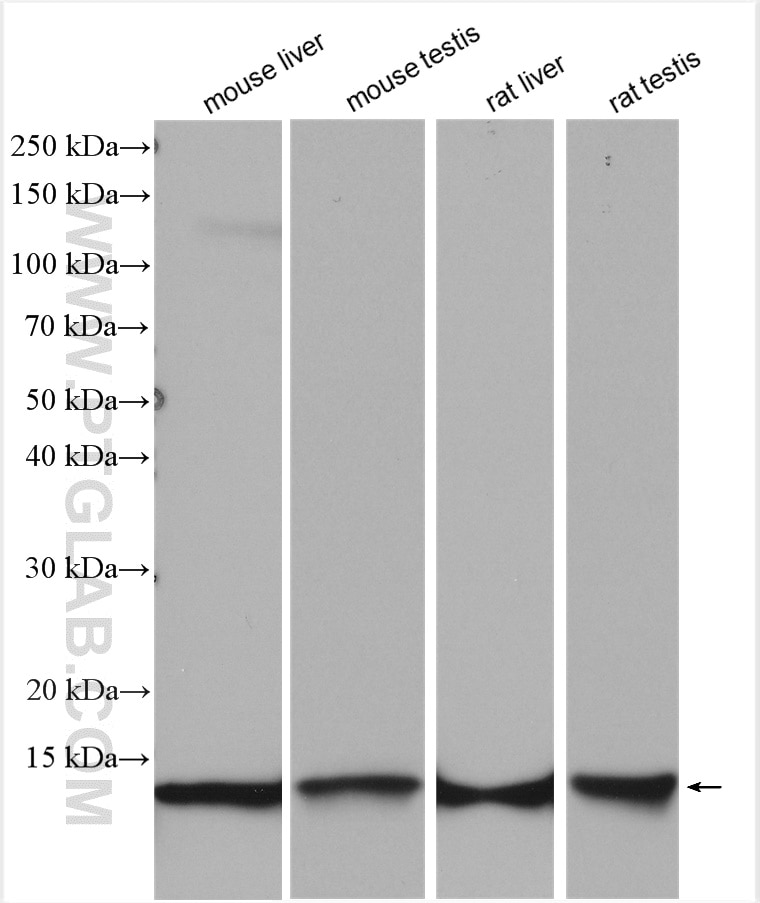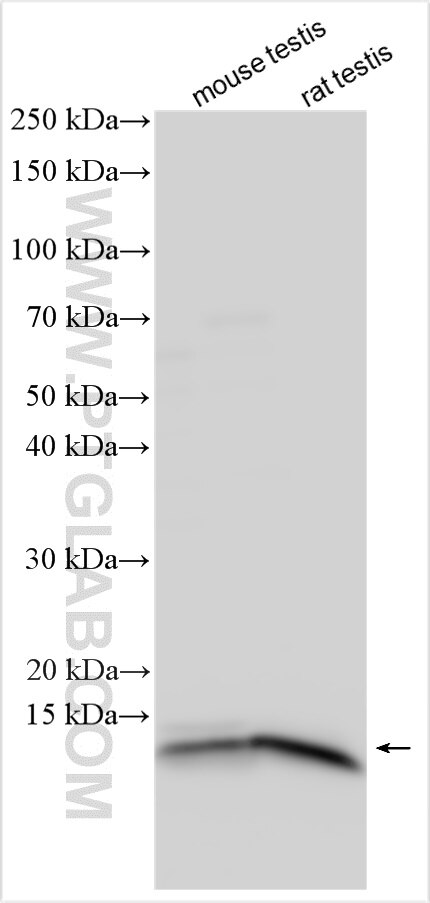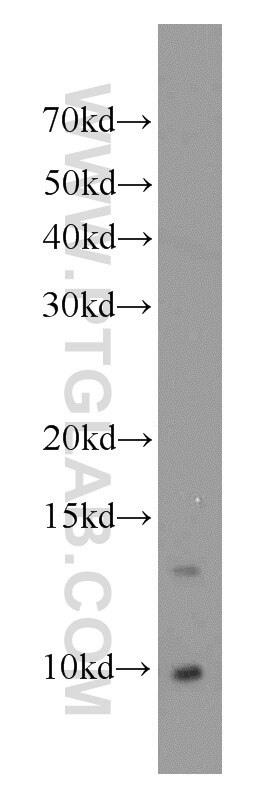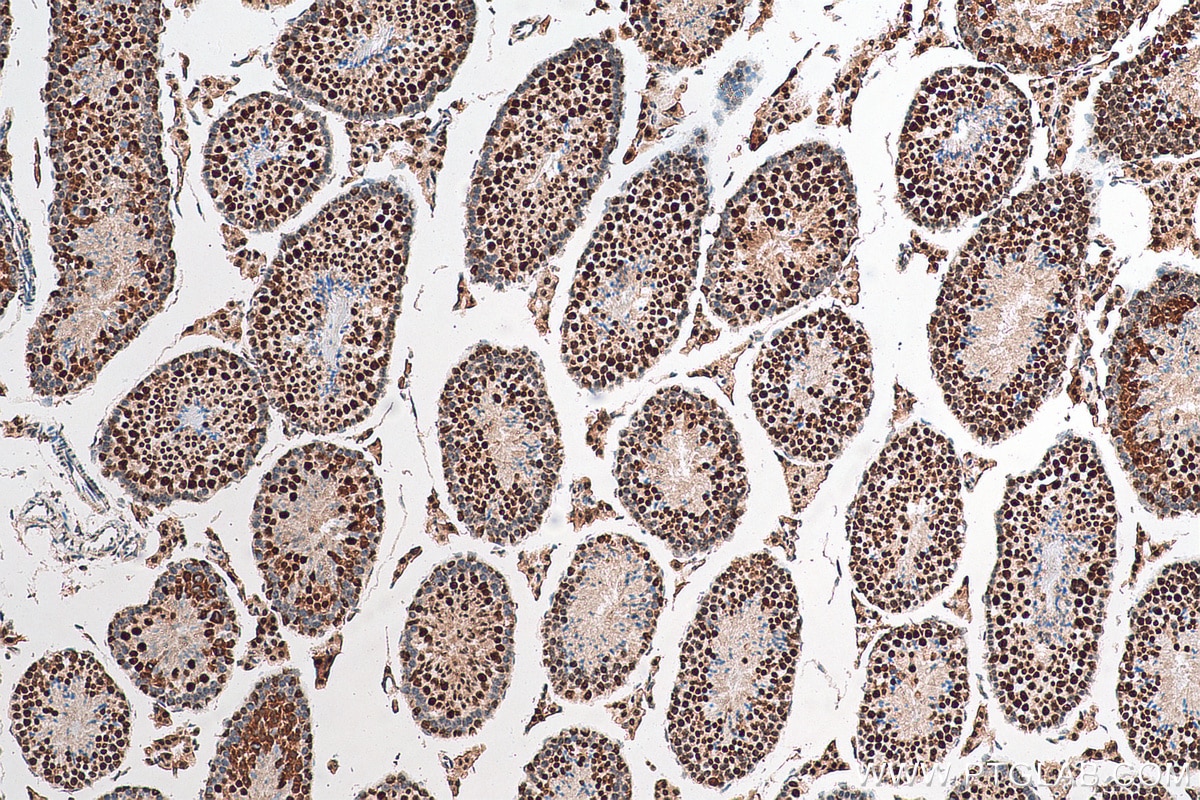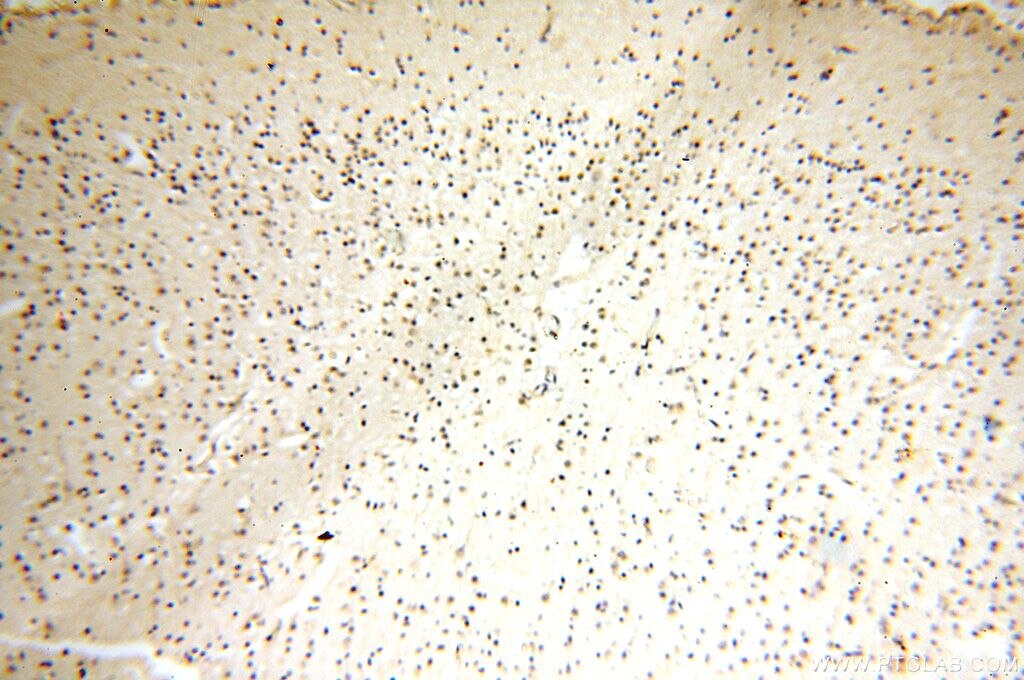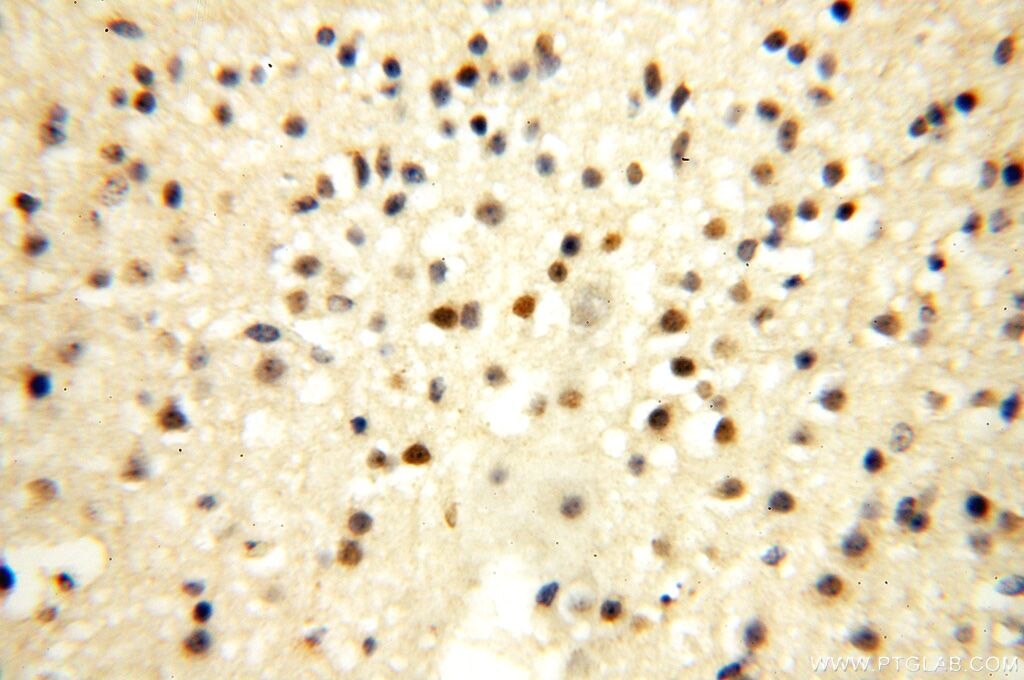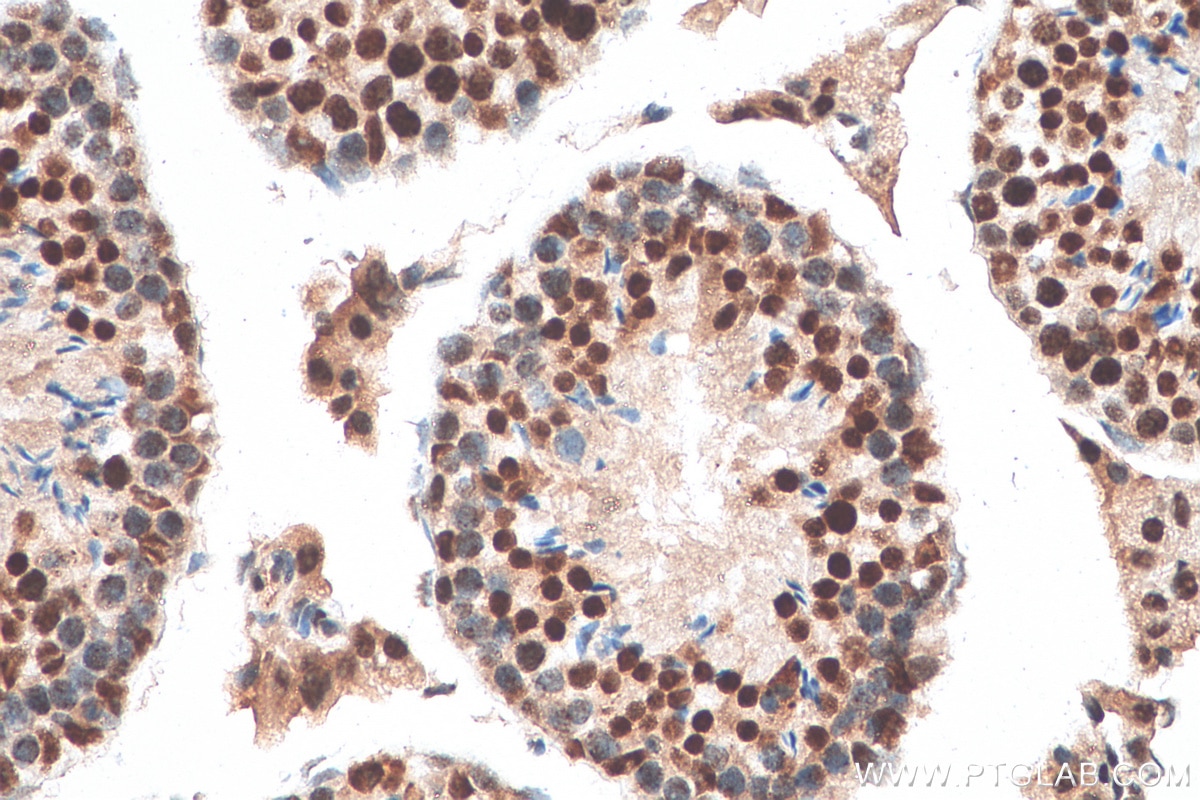Validation Data Gallery
Tested Applications
| Positive WB detected in | mouse liver tissue, mouse testis tissue, rat liver tissue, rat testis tissue |
| Positive IHC detected in | mouse testis tissue, human brain tissue Note: suggested antigen retrieval with TE buffer pH 9.0; (*) Alternatively, antigen retrieval may be performed with citrate buffer pH 6.0 |
Recommended dilution
| Application | Dilution |
|---|---|
| Western Blot (WB) | WB : 1:500-1:1000 |
| Immunohistochemistry (IHC) | IHC : 1:50-1:500 |
| It is recommended that this reagent should be titrated in each testing system to obtain optimal results. | |
| Sample-dependent, Check data in validation data gallery. | |
Published Applications
| IF | See 1 publications below |
Product Information
15974-1-AP targets ERH in WB, IF, IHC, ELISA applications and shows reactivity with human, mouse, rat samples.
| Tested Reactivity | human, mouse, rat |
| Host / Isotype | Rabbit / IgG |
| Class | Polyclonal |
| Type | Antibody |
| Immunogen | ERH fusion protein Ag8761 相同性解析による交差性が予測される生物種 |
| Full Name | enhancer of rudimentary homolog (Drosophila) |
| Calculated molecular weight | 104 aa, 12 kDa |
| Observed molecular weight | 12 kDa |
| GenBank accession number | BC014301 |
| Gene Symbol | ERH |
| Gene ID (NCBI) | 2079 |
| RRID | AB_2098556 |
| Conjugate | Unconjugated |
| Form | Liquid |
| Purification Method | Antigen affinity purification |
| UNIPROT ID | P84090 |
| Storage Buffer | PBS with 0.02% sodium azide and 50% glycerol , pH 7.3 |
| Storage Conditions | Store at -20°C. Stable for one year after shipment. Aliquoting is unnecessary for -20oC storage. |
Protocols
| Product Specific Protocols | |
|---|---|
| WB protocol for ERH antibody 15974-1-AP | Download protocol |
| IHC protocol for ERH antibody 15974-1-AP | Download protocol |
| Standard Protocols | |
|---|---|
| Click here to view our Standard Protocols |
Publications
| Species | Application | Title |
|---|---|---|
J Cell Sci Novel stress granules-like structures are induced via a paracrine mechanism during viral infection. |
